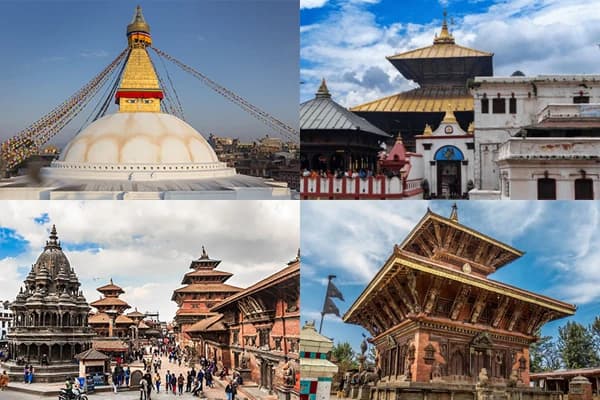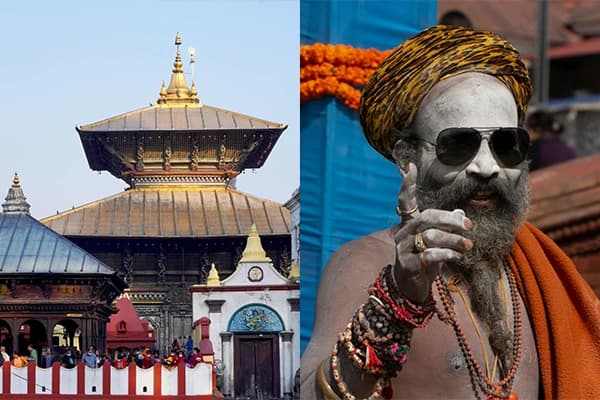The beauty of Mt. Everest
Mount Everest is a worldwide phenomenon due to its impressive height. It defines its true beauty. Moreover, the mountain is also known as the peak, with stories of heroism, resilience, and mystery.
The trekkers often try to summit the peak beyond their mental and physical limits. The challenge that trekkers face while summiting Everest is the true allure of the peak. Furthermore, the cultural and spiritual importance allure the Everest peak even more.
Since the discovery of the Everest peak, various attempts have been made and succeeded. The first attempt was made in the 1920s. This was the time when Mt Everest was opened to outsiders for climbing. The first country to give permission was Tibet (now China), before Nepal ( asia ).
In 1949, when the Chinese revolution started and China invaded Tibet, this event led to the climbing close to the northern route. At that time, people and revolutionaries found a way to climb mountains Everest from the Nepal region.
There is the mystery of whether Tenzing Norgay and Edmund Hillary were the first to successfully summit Everest. There is the infamous story about George Mallory and Andrew Irvine, who made their first successful attempt at Everest in 1924 but never returned.
So, the story remains a mystery in the history of the mountain summits of asia. This mystery becomes a hot topic to discuss and debate about who was the one to successfully climb the peal first.
But the proven and famous story tells us that Tenzing Norgay and Edmund Hillary were the ones who successfully summited Everest on 29 May 1953 and returned alive. The photos and their life were proof that they made a successful attempt.
However, various attempts and failures led to the deaths of the mountaineers. One of the tragic events happened in 1996, when eight climbers died in a single storm. Despite the challenges and death tolls, trekkers still hope to summit Everest one day and various successful attempts are been made till now.
- Spiritual and cultural significance for the people of Nepal and Tibet
Beyond the adventure and summit of Mt. Everest, there is something that beautifies the peak. I.e., the spiritual and cultural importance of the area. Both Hindus and Buddhists have different beliefs about the famous peak in asia, Everest.
Buddhists believe that visiting the peak helps connect with the inner self and gain some knowledge. While Hindus believe that the journey to Everest is spiritual and connected to God,. Moreover, both religion see the mountains as sacred place and worship the peak as the mother goddess of the world.
Before every summit, the Sherpas organize spiritual ceremonies. This shows the spiritual importance of the Everest peak. Moreover, Mt. Everest is also famous for its cultural and traditional values.
The trekkers can enjoy the unique traditions, languages, music, and arts. In addition, the Nepalese people celebrate the festivals and follow the rituals. These shows the cultural heritage of the Mt. Everest area.
- Impact on global tourism and mountaineering
Mt. Everest has become a popular place for tourism and mountaineering. People from all over the globe come and visit the mountain areas. Moreover, this peak is the popular choice to spend vacations for the elite people who want to have some adventures in their holidays.
This interest among tourists has led to the growth of tourism and the development of the area. Every year, thousands of tourists visit the Everest region and spend their vacations there. Furthermore, the commercialization of mountaineering and trekking activities in asia has led to an increase in the number of climbers and summits of Everest Mount Everest.
The challenges of climbing Mount Everest
The climbing of Everest in asia comes with various challenges, like environmental risks, mental and psychological hurdles, and physical challenges. To successfully summit the peak, one has to overcome these challenges.
- Physical challenges faced by climbers
While summiting the Everest of asia, the climbers face various physical challenges. These challenges come due to the extreme altitudes and harsh conditions. The climbers start facing altitude sickness like fatigue, weakness, breathlessness, and retardation of thought and action when ascending above 5485 meters.
Moreover, there are more obstacles like avalanches, extreme weather conditions, and so on awaiting the climbers along the summit. These problems can be overcome by doing proper physical training, mental preparation, cardiovascular endurance exercises, and so on.
The challenges can be more due to improper planning like summit fever, and impatience to reach the top quickly. The recommended Everest expedition time is two months, including acclimatizing, ascending, descending days, and maintaining an extended period for the recovery of the physical strain.
- Mental and psychological hurdles
The summit of Everest includes various mental and psychological hurdles. The hurdles become worse due to the reduced oxygen levels, and extreme stress while climbing and may lead to severe neurological and psychological conditions like hypoxia and other altitude-related illnesses.
Moreover, climbers face altitude sickness like mental fatigue, intimidation, and loss of focus or will. These hurdles can be overcome by doing enough mental preparations. The mental strategies and training include focus exercises, mental toughness training, making short-term goals, drawing on experience, connecting to one's body, feeling support from other climbers, and belief in personal capacities.
Famous expeditions and climbers
Since Mt. Everest was discovered and climbing the peak was commercialized, the peak has been climbed by various legendary figures around the world. These figures have made their names on the golden plates in the history book of mountaineering of asia.
- Some notable expeditions throughout history
Mt. Everest has seen much human bravery and determination. Despite being a risky place to summit, hundreds of climbers come out of their comfort zone and summit the world’s tallest peak.
Some of the popular expeditions include:
- British expeditions led by George Mallory
This is the expedition in which the first recorded ascent of Mount Everest was made. This historic achievement was made by Sir Edmund Hillary of New Zealand and Sherpa Tenzing Norgay from Nepal in 1953.
- Reinhold Messner's ascent
He attempted to climb the mountain without supplemental oxygen and gained success at a summit in 1980.
Profiles of famous climbers
- Jerzy Kukuczka: Jerzy is the one who achieved the incredible feat of ascending all 14 of the world's 8,000-meter peaks in the harshest conditions and without supplemental oxygen.
- Sir Edmund Hillary and Tenzing Norgay: Hillary and Norgay were the first climbers to successfully climb Mt. Everest in 1953.
- Junko Tabeia: She was the first woman to summit Mount Everest in 1975.
- Dan Mazur: Manzur has climbed seven of the world's 8,000-meter peaks and led expeditions more than 15 times to the world's highest peaks, including seven summits of Everest.
- Brigitte Muir: Muir was the first Australian woman to summit Mount Everest and the first Australian, male or female, to climb the Seven Summits, which includes the highest summit on each of the continents.
Records and milestones
- 1856- The summit step on Mount Everest to calculate the height of the peak.
- 1921- this first expedition to Mt. Everest was led by George Leigh Mallory, a British reconnaissance expedition.
- 1924- Mallory and Andrew Irvine attempted to climb Everest but couldn’t survive. it is one of the notable mount everest deaths.
- 1924- an attempt was made but failed due to the avalanche. The avalanche killed seven sherpas.
- 1952- Members of a Swiss expedition led by Edouard Wyss-Dunant set a climbing altitude record. They reached a height of about 8,595 m on the southeast ridge.
- 1953- Sir Edmund Hillary and Tenzing Norgay became the first climbers to reach the summit of the world's highest peak, Mount Everest.
- 1980- Reinhold Messner of Italy climbed Mount Everest solo without supplemental oxygen.
- 1999- Mallory's body was found but proof of the successful expedition was not found.
- 2002- Japanese climber Watanabe Tamae became the oldest woman to reach the summit at the age of 63.
- 2010- American Jordan Romero becomes the youngest person to reach the summit at the age of 13.
- 2012- Japanese climber Watanabe Tamae broke her record of the oldest woman to reach the summit again at age 73.
- 2013- Japanese climber Yūichirō Miura becomes the oldest person to reach the summit at the age of 80.
- 2022- Nepalese Sherpa Kami Rita broke his record for climbing Mount Everest, reaching the summit for the 26th time.
Environmental concerns and conservation efforts
Environmental concerns and conservation efforts are necessary to maintain the mountain ecosystem and practice sustainable tourism in the region. These practices help to preserve and protect Mt. Everest.
- Impact of human activity on the mountain's ecosystem
Humans are responsible for most of the activities in the mountain’s ecosystem. Pollution-creating activities like throwing waste anywhere in the mountain region can bring various environmental issues. Moreover, overharvesting of Natural Resources, Overcrowding of Base Camps and emission of greenhouse gases can impact the ecosystem.
Human activities, like emission of the greenhouse gases, are affecting Mt. Everest and its surrounding ecosystems. Due to the emission, the temperature has been rising causing ice loss and soil erosion at an alarming rate in the Everest region.
The water quality in the Everest region is declining as a result of pollution from human waste at Everest Base Camp. Activities like mining, metal smelting, oil, and coal combustion are causing pollution.
- Overharvesting of Natural Resources
Overharvesting of natural resources like the endangered alpine juniper can make its species extinct. Generally, the harvesting of alpine juniper is done for fuel wood.
- Overcrowding of Base Camps
The increasing number of climbers and trekkers at mt everest base camp Nepal leads to a decrease in the natural resources that are slowly turning the greeny landscapes into deserts.
- Efforts to preserve and protect Mt. Everest
To save Everest’s ecosystem, various efforts have been made like litter and waste management, and pollution control. Moreover, the initiatives aim to clean up the mountainous areas.
Private businesses, the Nepal government, NGOs, and INGOs are actively involved in preserving the ecosystem of the Everest region. In addition, the government of Nepal is imposing penalties for littering, making available of portable toilets at base camps, investments in waste treatment facilities, and so on.
- Role of sustainable tourism in preserving the region
There is a huge role of sustainable tourism in preserving the Everest region. Sustainable tourism approaches like eco-friendly practices, community involvement, and strict regulations help in leading sustainable mountain expeditions.
Moreover, the economic benefits from tourism also help to preserve the Everest region. Various initiatives like waste management campaigns, controlled climbing permits, and sustainable transportation methods are run that focus on minimizing the environmental impacts of tourism. By promoting sustainable tourism, the area can be conserved and tourism can be practiced for the long term.
Conclusion
Mount Everest (mount in asia) is the most valuable jewel of the Country. Nepal is represented as the country of Mount Everest globally. As the citizen of Nepal, It is our responsibility to preserve the highest peak in the world, Everest. Everyyear, many foreigners and locals make their attempt to step foot on the Everest peak, but some lose their lives on the way while others make a lifetime memory. A strong mindset and experience in mountaineering help you to achieve victory.
If you are planning to climb the summit of Mount Everest in asia, make sure to be aware of the climate, geography, and other necessities. You can contact us for further information regarding the permits and itinerary of the summit climbing.





